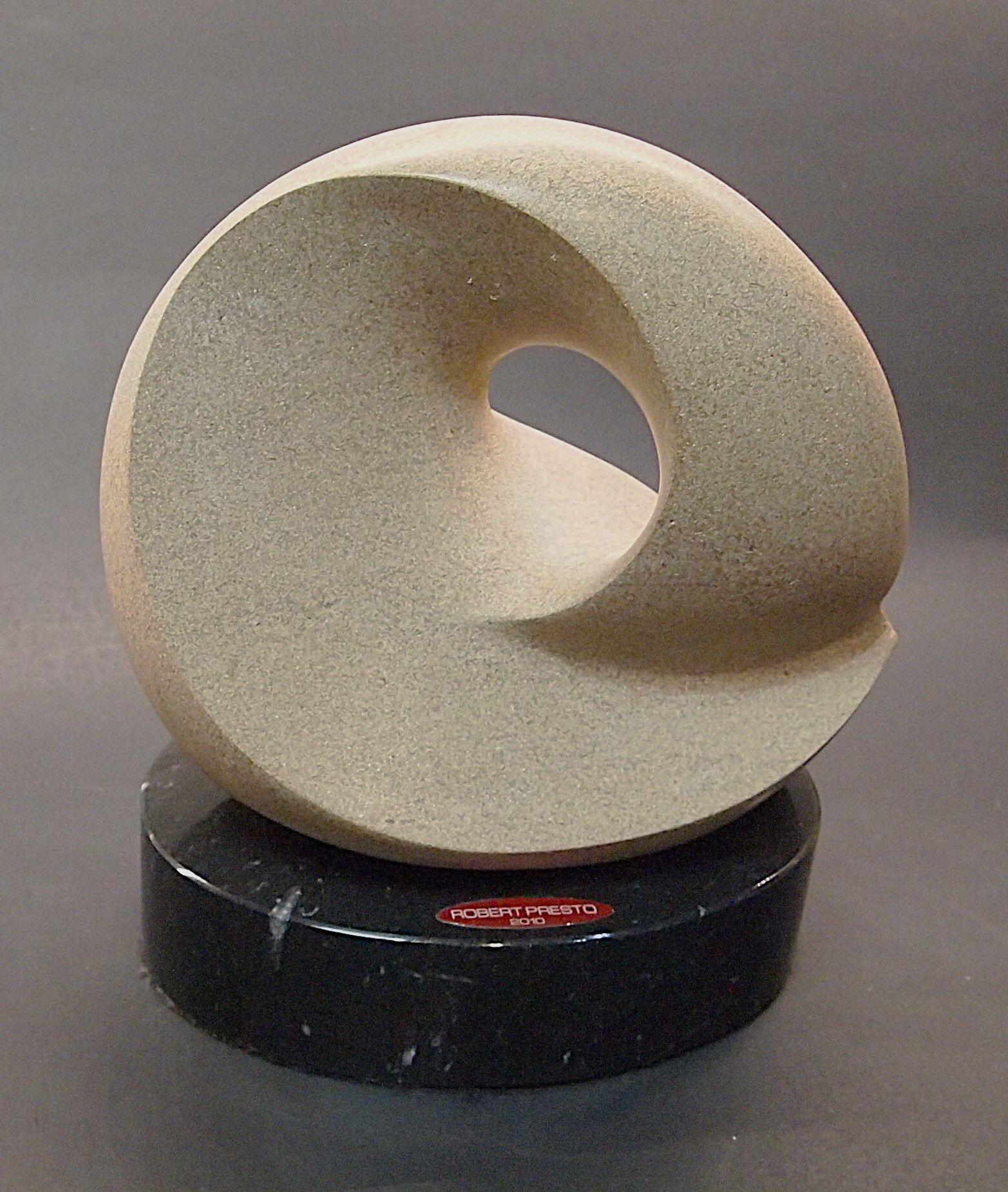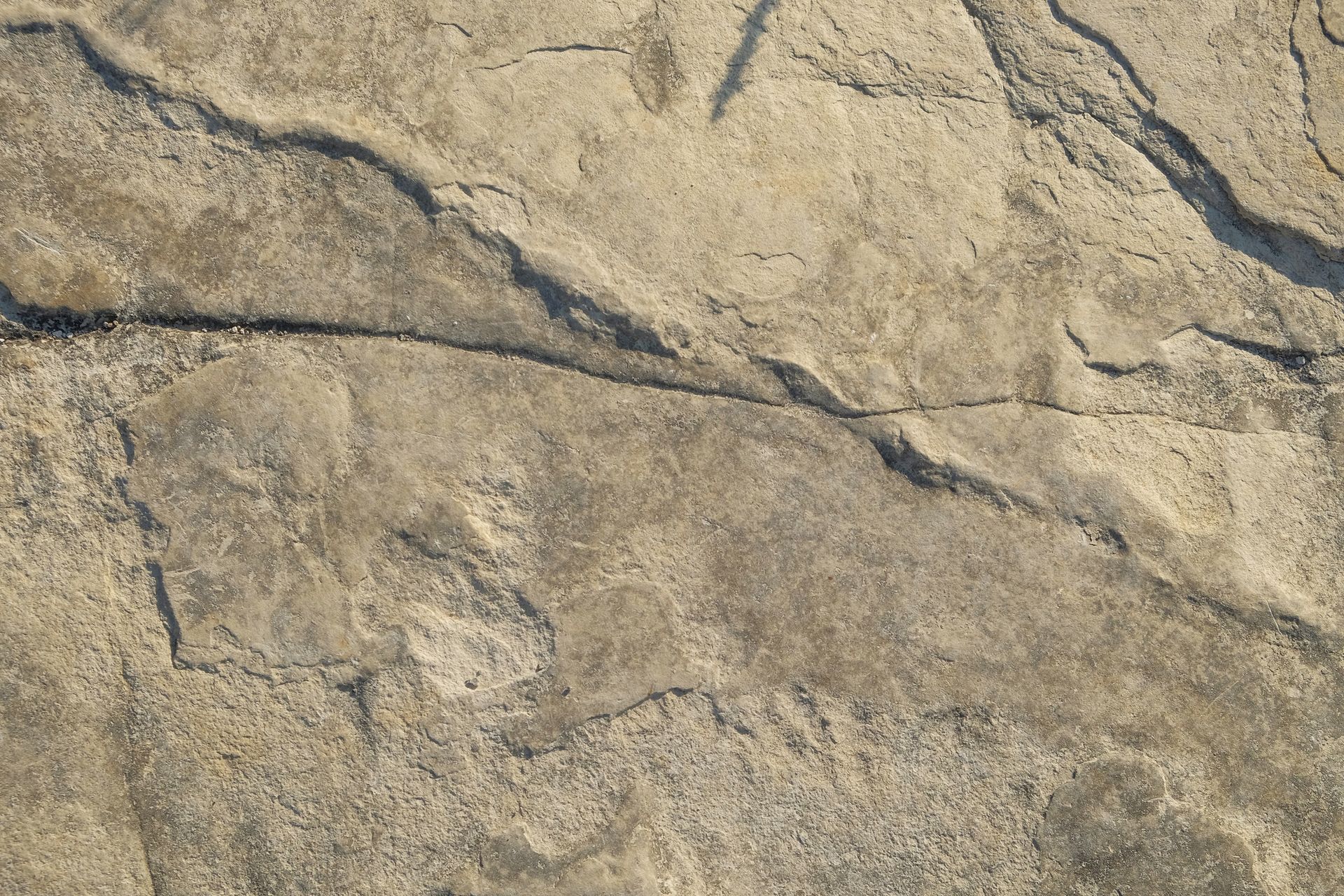Limestone as a Medium for
Stone Sculpture
As you likely know, limestone is a highly fossiliferous sedimentary rock which can be found in significant deposits all around the globe. Indiana limestone is one of my favorite stones to use for practically any sculpture project. It’s harder than alabaster but softer than marble and granite. It’s capable of holding a good, sharp, finished edge, and once it’s sanded and polished, its surface becomes more durable and impervious than it otherwise exists within its raw state. I have, of course, used other types of stone in my work (primarily alabaster), but limestone remains my favorite, by far. It’s stable and uniform in texture, whereas alabaster is occasionally riddled with seams and cracks that sometimes don’t become obvious until the sculpture process is well underway.
Indiana limestone was formed within the geologic Mississippian and Pennsylvanian Periods, between 300 million and 360 million years ago. The Mississippian Period is the older of the two. During both, what we now know as Indiana and much of the surrounding region was submerged beneath an ancient, shallow sea which teemed with marine life of countless shapes and sizes. In areas of the world other than the United States, the Mississippian and Pennsylvanian periods are typically combined into the singular Carboniferous Period, due in part to the fact that the lines of demarcation between the two Periods in those regions of the planet are sometimes difficult to discern.
All forms of limestone precipitated from the skeletal remains of billions upon billions of corals, diatoms, protozoans, algae, and other prehistoric sea life, all of which settled into a primordial mud matrix and eventually solidified into stone through a process known as diagenesis. Limestone is a beautifully textured material, which has been used for thousands of years for the creation of monuments, statues, buildings, and uncountable works of art. In some examples, limestone’s integrated fossil structure is significant and quite obvious, while in others, it’s more subtle. The pyramids in the Giza Plateau and numerous other Egyptian monuments were constructed with the use of limestone, and many Mayan temples are adorned with limestone sculptures and glyphs.
Limestone exists in variations of white, grey, beige, yellow, brown, and black. It’s color and general texture are determined by the amount and type of minerals and organic matter that contributed to its primordial formation. Occasionally, limestone displays beautiful linear striations that only become apparent once the stone are sanded and polished. However, when the fossil matrices and striations are visibly present, they add incredible character to a finished sculpture.


